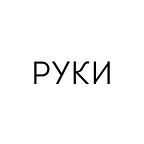August Smart Lock Teardown
To build any electronic device, you have to understand intimately how it’s made. That’s why we’re starting a series of posts that take a look into how popular consumer electronics are put together.
When it comes to electronic locks, the three most popular types are:
There are several differences between these devices. Some locks require installing additional hardware on the external part of the door, in some cases a deadbolt has to be replaced, etc.
Goji
Goji is unique because it has Wi-Fi connectivity integrated with BLE (Bluetooth Low Energy — low range wireless technology) and NFC and doesn’t have to rely on an external BLE — Wi-Fi bridge. This doesn’t make it automatically better though, since Wi-Fi significantly reduces battery life.
Lockitron
The original version of Lockitron contained a Wi-Fi system in it. To save power, the Wi-Fi only turned on when you knocked on the door, but this system proved too unreliable a system and was scrapped.
August
August is the simplest of the three (along with Okeydokeys). It has an existing lock mechanism interface and so doesn’t require the lock mechanism to be added.
Rotate the front cover to remove it and reveal a battery compartment (in the second version there are magnets instead of hooks that you will have to pull apart). The batteries can be removed by pulling the plastic strip wrapped around them.
An LED diffuser is in the center of the August Smart Lock.
When you turn over the device, you can see the part which goes face first into the hole of the door where the internal part of the door lock sits.
Remove the four screws on the back cover to see what’s inside.
A diagram of what you should see is below in the instructions.
The motor and the PCB are connected to the red body, which is connected to the backplate. The backplate fixes to the door. The outer shell turns the lock through several gears. This allows the lock to be opened from the inside by turning the August itself.
The gears sit loosely on the shafts that move freely in the red body. The threaded inserts on the “screw pillars” are there for ease of assembly.
The accelerometer LIS3DHTR is fixed on the shaft via a stiffener-backed flex PCB which connects to the main PCB. This way no separate connector cable is needed.
Looking more closely at the main PCB, we see the top-side features an ultra low-power STM32L152 microcontroller, BLE SoC (System on a Chip — IC combining microprocessor core and other peripherals, in this case a bluetooth transmitter) CC2541, Motor Driver DRV8833, MCP6142 Op Amp (acting as a pre-amplifier) and Power Amplifier LM4861M for the speaker.
The other side of the PCB features an 74AC541 LED driver IC and connectors for batteries, a speaker and an accelerometer.
LEDs are used to show the opening/closing animation in sync with the August opening/closing. Two colours are used — red for closing, green for opening — with separate LEDs for each colour.
A partial system diagram is below.
The principle of operation is as follows — after the phone establishes a secure BLE connection with the CC2541, it sends a request to open the lock to the STM32. The STM32 rotates the motor using PWM (Pulse-width Modulation — technique for creating analogue signals using digital signal) and monitors the orientation of the shaft throughout the process by talking to the accelerometer. At the end, to make sure the deadbolt is rotated all the way, it tries to rotate it to the point when it doesn’t anymore and then stops, reporting the status of the lock back to CC2541, which then relays it to the phone.
The 6V required by the motor are generated by connecting two AA battery packs each comprised of a series connection of 2 AA batteries. 3V for the on-board logic are taken from the same series connection.
COGS: ~$23
Retail price: $199
We hope you’ve enjoyed your look inside August Smart Lock. Stay tuned for future teardowns!
Text: Andrey Goverdovsky (embedded systems engineer, Lapka)
Illustrations: Denis Sharypin (art-director, RUKI)
__
RUKI is a hardware incubator, based in Shenzhen, Moscow and San Francisco.
Follow RUKI:
twitter.com/use_ruki
instagram.com/use_ruki
facebook.com/rukirussia
To find out more: useruki.com
